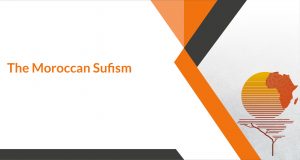The Moroccan Sufism

Sufism came into Morocco when Islam entered Maghreb. The Sufi teachings were indivisible as Moroccans are Muslims and Sufi in their indissoluble relationship. This was manifested in their love for religion and for the Prophet Mohammed (blessings of Allah be upon him) and his pure family members and companions. Its manifestation also emerged in the allegiance of the tribes of Morocco to Mawly Idris Al-Akbar, may Allah be pleased with him, and his marriage to Mrs. Kniza Al-Awrabya.
The Beginnings of Sufism in Morocco
However, the manifestations of Moroccan Sufism can be observed in what an educational behavior has such as manifestations and factual representations through education which are taught by Sufi Sheikhs who have experienced the souls and knew their medicines. By the end of the 6th century, the call for reforming the “hearts” and nourishing “spirits” had been emerged by group of Sufi know-how and educators whose branches of education extended over places and times even after them.
Among this trend are Sheikh Mohammed Ibn Abdelkrim who is famous as Sufi Ibn Al Kattani, and the Great Sheikh Muhi Al-Din Ibn Arabi Al-Hatami, who settled in Morocco for a period, as well as Sheikh Abu Al-Hassan al-Harali, who is a great Sufi interpreter of the Quran, and Sheikh Abu Ya’za Yellnour, and Sheikh Ali Ibn Harzam…. and others who have made Morocco a country of Sufi saints. It can be said that Sufism settled an educational system with Sheikh Abdesalam Ibn Mishish and his students such as Sheikh Abu Al-Hassan Al-Shadli. Then, it became mature with Sheikh Abu Sulayman Al-Jazuli, who is the founder of the first Zawya and the first Sufi Order.
The Development of the Zawya Concept
The concept of the Zawya is transformed by a group of Sufi know-how to a collective spiritual project in which Al-Murid (follower) is brought up and educated with others by a Sufi sheikh to graduate then as imams and reformers, instead of individual work based on self-reform, fraternity, Dikr, and worship. This led to the establishment the Zawaya which had of the spiritual, educational, social, and political post-reform; these can be called the “mothers of Zawaya”. Then the Sufi Order and Zawaya grew up, which can be referred to as the branches of the Zawya such as Zawya of Al Fassi, which is founded by Sheikh Abi Al-Mahasin Yousef Al-Fassi and then by Sheikh Abderrahman Ibn Mohammed Al-Fassi in the late 10th and early 11th centuries in Fez; it attracted many Muridin (followers). In addition, there is a Zawya Al-Nassiriya in Tamekrut, which was founded by Sheikh Omar Ibn Ahmad Al-Anssari in the 10th century AH, as well as the Zawya Al-Ma’iniyya that was founded by Sheikh Mohammed Ma’ Al-‘Aynayn n in the Moroccan desert. It also had a Jihadist influence as well as educational, spiritual and scholastic roles. In the present time, there are some Zawaya like the Budshishi Zawya, which has a Qadiri influence; it is located in Madagh in the east of Morocco, and it has many Muridin and followers inside and outside Morocco.
These Zawaya are still rehabilitated their spiritual, educational and spiritual roles in order to meet and respond to the needs of the people to education and Tazkyya. These Zawya carried educational, spiritual, and aesthetic memory that constitutes a distinctive milestone for the work of Moroccans in religious faith, Maliki jurisprudence, Islamic culture and Sufi behavior. The Zawaya are sponsored by the Commander of the Faithful’s care, and he ensures that their roles and contribution are open over time and space to meet the spiritual virtues of the Muslim within the challenges of the contemporary context.
